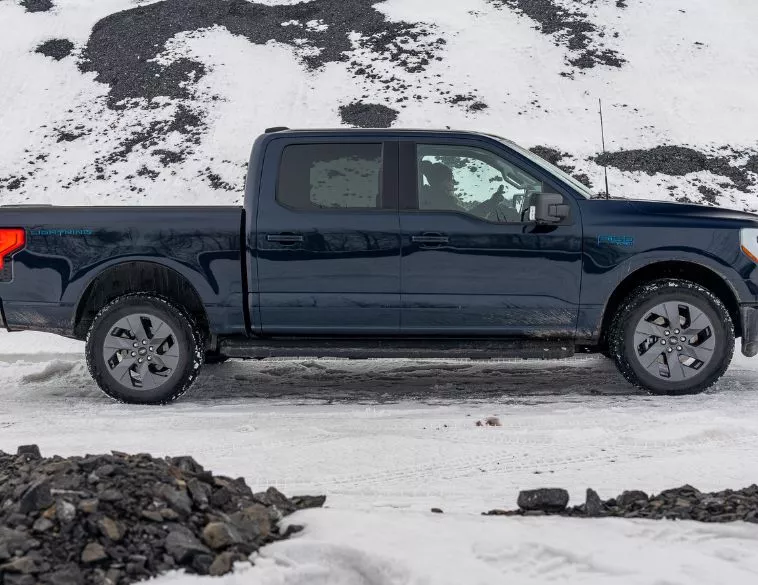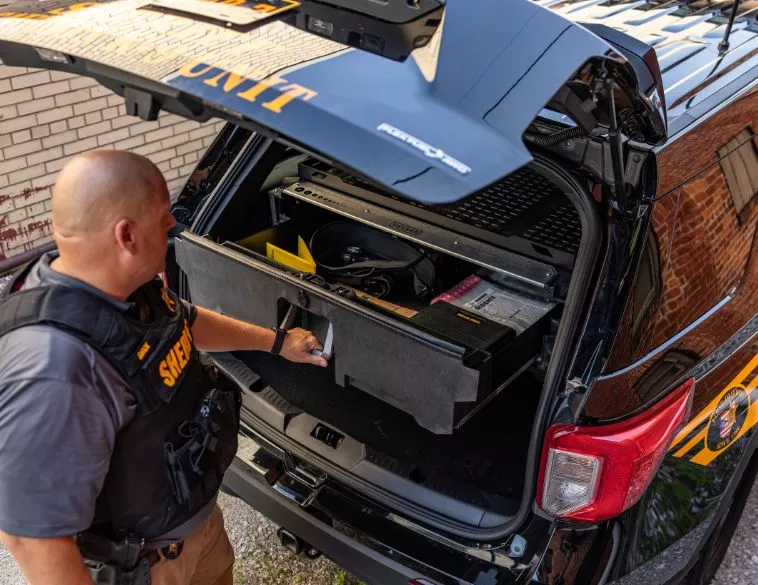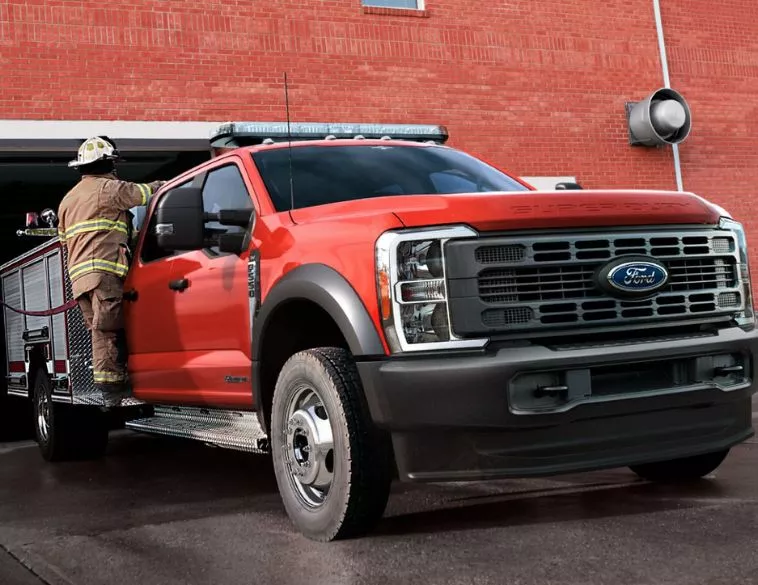Ford F-150 Lightning: Where Robustness Meets Electrification
The Ford F-150 Lightning emerges as a noteworthy choice for fleet managers. Robust, powerful, and eco-friendly, it retains the DNA of its gasoline-powered twin while integrating the advantages of an electric powertrain.

Ford has dominated the pickup truck market in Canada for 59 years. In 2023, the manufacturer sold 133,857 F-Series trucks in Canada. The range includes the F-150 (regular and Lightning), F-250, F-350, and F-450. The electron-powered iteration is occupying a growing place in this segment. With 5,781 registrations, it ranked 12th among the most popular EVs in Quebec according to the website www.roulezelectrique.com.
Its success is partly linked to the Eco-Trucking Program, which offered a $10,000 subsidy for the purchase of a model used for commercial purposes. Between April 2023 and September 2024, 752 pickup trucks benefited from this assistance, representing 43% of the total light vehicles supported by the program. This support has been suspended due to exceptional demand, but a new version could emerge as early as April 2025.
The Lightning stands out from the competition with its versatility, capabilities, and technological equipment. It retains the many qualities of the gasoline-powered F-150 that have contributed to its popularity, while incorporating an electric powertrain.
Starting at $62,890, for the Pro configuration, the Lightning's pricing appears to be competitive initially, but quickly rises when customizing with available options. The Flash variant of our test model ($82,795 — including $2,795 in shipping and preparation fees) includes the extended-range battery, the BlueCruise hands-free system, and the 15.5-inch vertical touchscreen with the latest version of SYNC technology.
An ally in the field
The Lightning is powered by a twin-motor electric setup that produces a total of 580 horsepower (433 kW) when configured with the larger 131 kWh extended-range battery. The 98 kWh battery limits power to 426 horsepower (318 kW). Both produce 775 lb-ft of torque. This pickup can also serve as a backup generator. According to Ford, with a full charge, the Lightning can function as a power source for up to three days if utilities fail, and it can charge other electric vehicles.
The larger battery gives a towing capacity of up to 4,535 kg (10,000 lb) with the optional Max Towing Package. Otherwise, it's limited to 3,492 kg (7,700 lb). The payload with the standard battery is 1,014 kg (2,235 lb), but drops to 885 kg when the vehicle is equipped with the more powerful variant.
The transition to electric power substantially reduces carbon emissions, creating value for businesses focused on sustainability goals. Despite the considerable power requirements of this pickup, the elimination of gasoline expenses provides offsetting benefits. Data from Radio-Canada indicates that and ICE F-150 typically consumes 18.1 litres/100 km. Assuming it’s driven 16,000 km per year, this translates into approximately 90 tonnes of CO2 released during a 13-year operational lifespan.
ProPower Onboard is one of the Lightning's major assets. This integrated generator provides up to 9.6 kW of energy, which is enough to power electric tools at a worksite. The system includes 11 outlets located throughout the vehicle: four 120V outlets in the bed, as well as in the front trunk (frunk), two in the cabin, and a 240V outlet for more energy-intensive equipment. Users can utilize the system without turning on the vehicle. Simply unlocking the truck is enough to activate this feature.
With the SuperCrew layout, occupants enjoy a roomy and user-friendly interior, enhanced by the plush cloth upholstery, and a smooth ride, thanks to the independent rear suspension. The truck offers abundant and strategically-placed storage options. The frunk adds an additional 400-litre area and supports up to 181 kg (400 lb) of cargo. The 5.5-foot bed remains a compromise, offering less versatility than some competitors like the Chevrolet Silverado EV (5 feet 11 inches with folding partition).
Not perfect, but almost...
The Lightning's greatest vulnerability remains its driving range, particularly in cold weather and when pulling trailers. Ford advertises a maximum distance of 515 km with the extended-range battery option installed (or 386 km with the standard power pack). During CAA-Quebec's Winter Electric Road Trip (https://fleetmobility.ca/fr/vehicules-legers/dans-lil-du-froid-14-vehicules-sous-la-loupe-lors-de-la-premiere-edition-canadienne-de-la-viree-electrique-caahivernale), it only managed to cover 296 km, 35% less than the official data. The Flash version hardly did better, never showing more than 424 km of range at departure.
According to Ford, the Lightning can replenish its battery from 15% to 80% in a mere 41 minutes when connected to a DC fast charger delivering 150 kW or more. For home charging, Ford states that a Level 2 charging station requires 13 hours to completely restore the battery. However, real-world performance often falls short of these figures when environmental factors are less than ideal. The good news is that the upcoming 2025 model year introduces a new heat pump system that could significantly improve these metrics (our test vehicle was a 2024 model).
Despite its few weaknesses, the Ford F-150 Lightning remains competitive against its rivals. Even though the Silverado EV (5,670 kg [12,500 lb] towing capacity) and the Ram 1500 REV (800 km range), whose release has been pushed back to 2026, display superior capabilities, Ford's electric truck maintains the competitive edge established by its predecessors' long-standing reputation.
The Lightning meets the needs of fleet managers seeking a reliable, high-performance, and eco-responsible electric solution. It reduces operating costs while offering power and versatility comparable to its gasoline counterpart. With this iteration, Ford preserves its leadership status while offering an electric option.

















